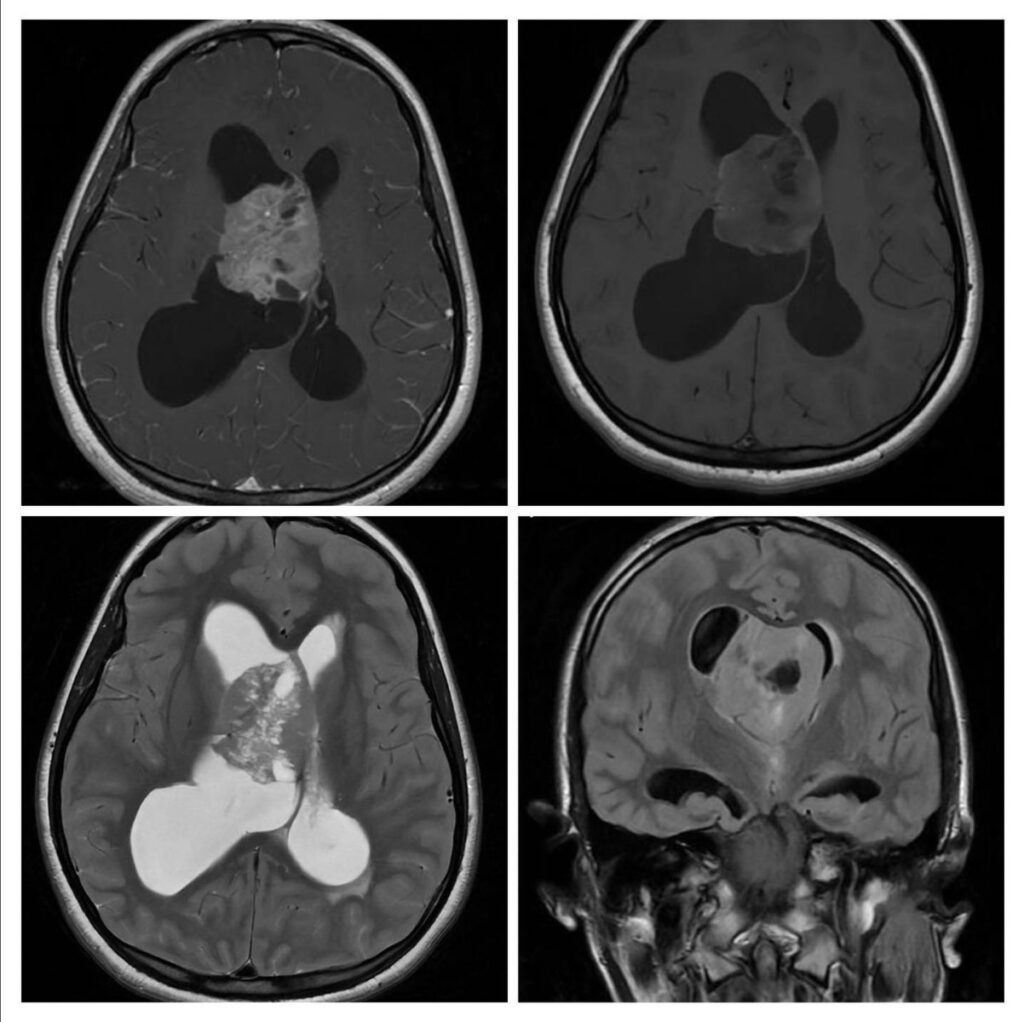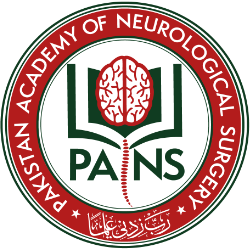
Select the most likely diagnosis on the images of a 17 years old girl who had presented with a headache.
- Ependymoma
- Central neurocytoma
- Choroid plexus carcinoma
- Meningioma
- Astrocytoma
- Subependymoma
Answer
Congratulations to those who selected central neurocytoma. A grade II tumor, it is mostly iso-intense on T1 with some heterogeneity, iso- to hypo-intense on T2 with some cystic areas, and has mild to moderate heterogeneous contrast enhancement. The cystic areas on T2 often attenuate on FLAIR.
Ependymoma and subependymoma were very close differentials for this patient. But they are more frequently found in the 4th ventricle. Ependymoma is more common in younger children while subependymoma occurs usually in older adults. Ependymoma can also have extra-ventricular components.
Choroid plexus tumors and meningioma have intense contrast enhancement. Meningiomas are rare in children.
Subependymal giant cell astrocytoma can occur in children but in association with tuberous sclerosis and shows vivid contrast enhancement.

